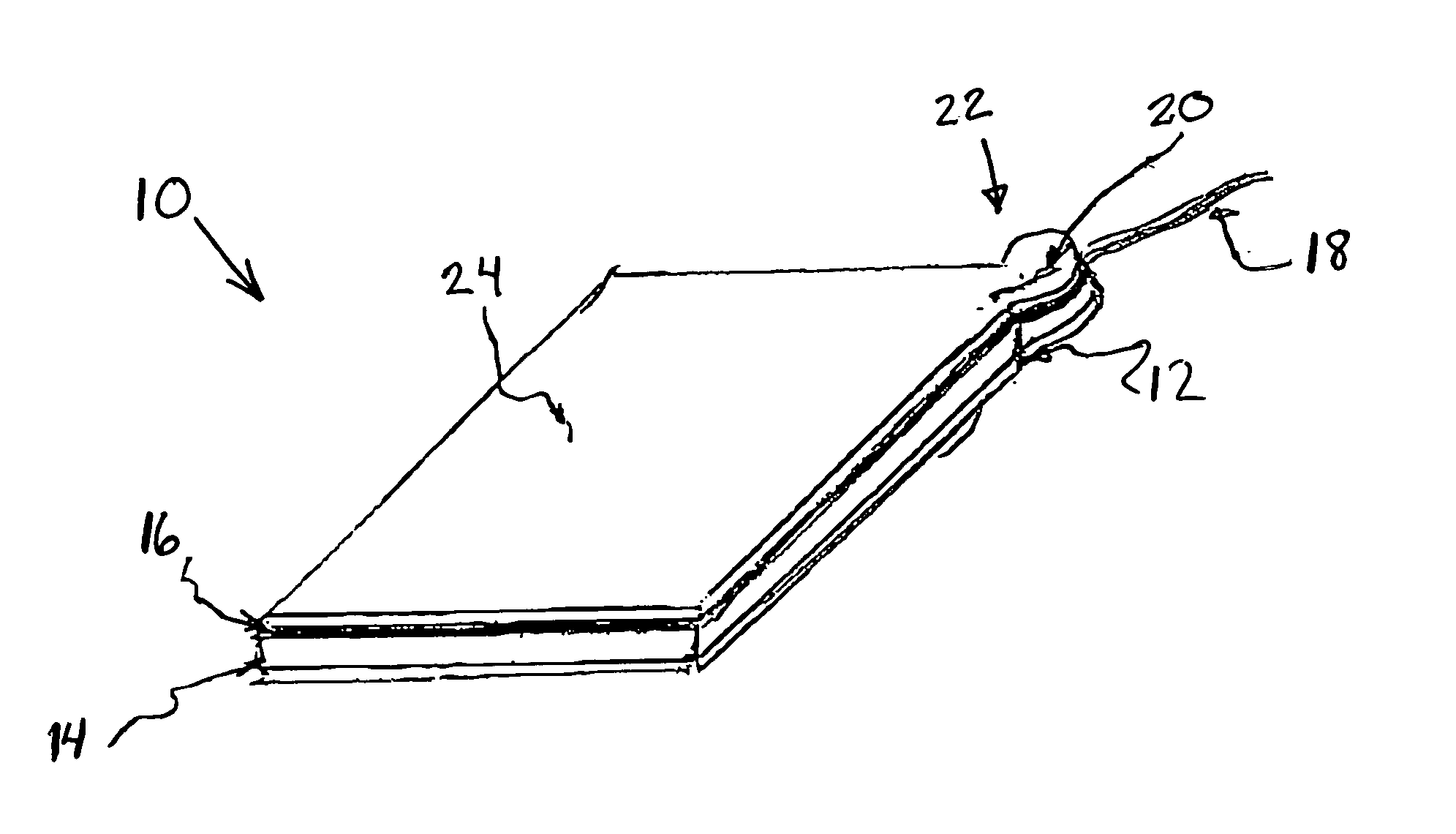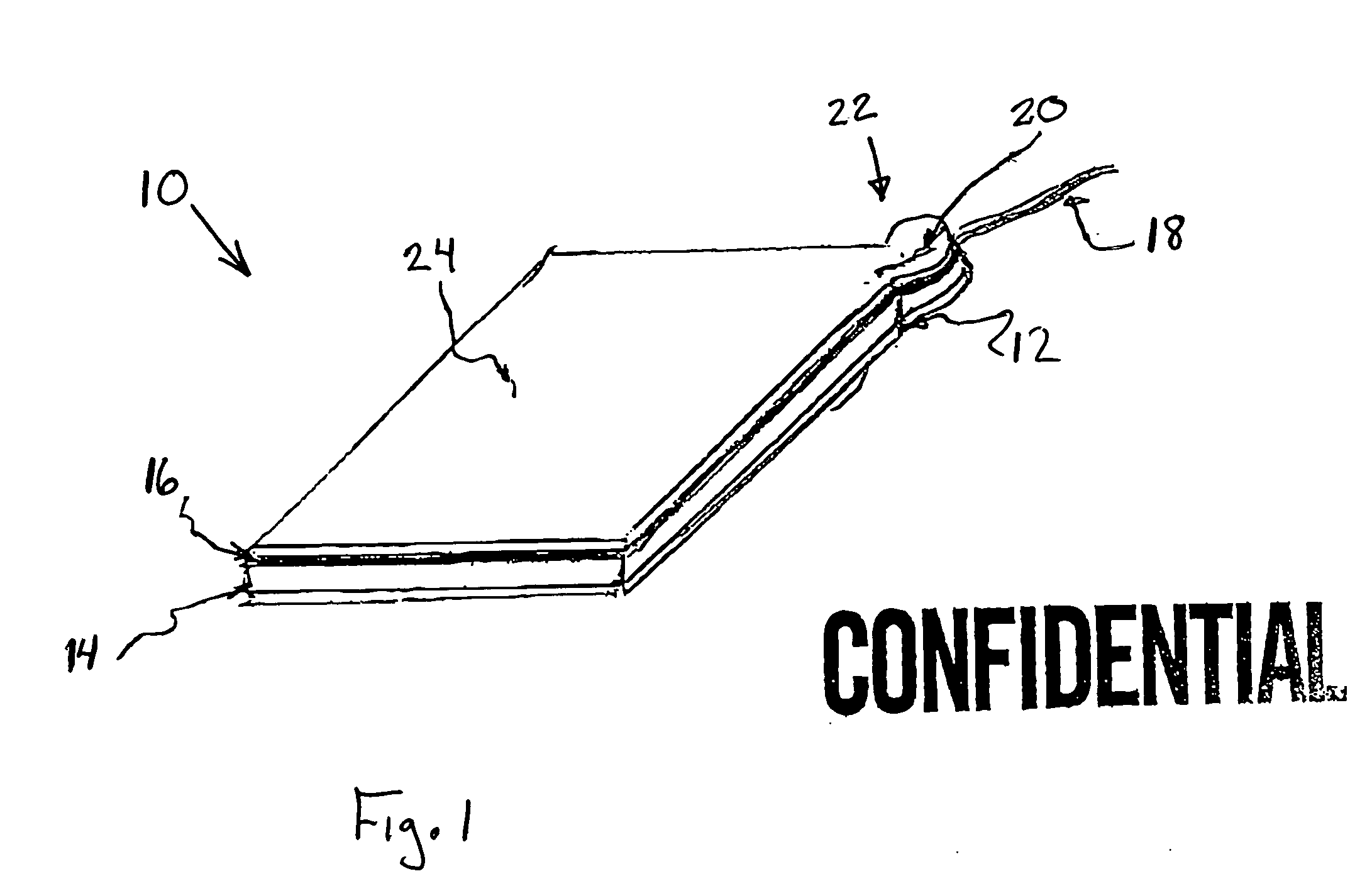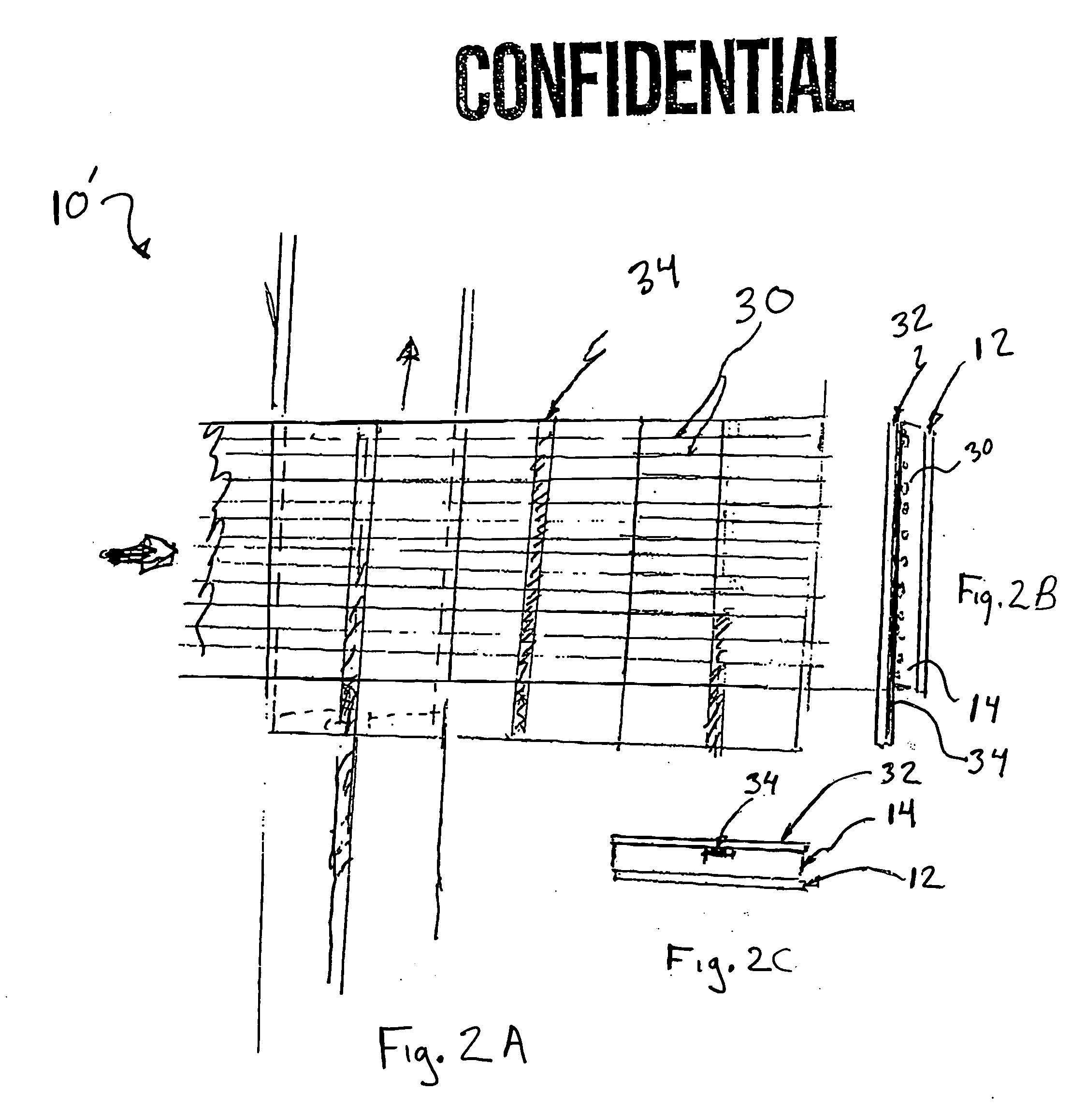Biomedical electrodes and biomedical electrodes for electrostimulation
- Summary
- Abstract
- Description
- Claims
- Application Information
AI Technical Summary
Benefits of technology
Problems solved by technology
Method used
Image
Examples
Embodiment Construction
[0028]FIG. 1 illustrates an electrode 10 in accordance with an embodiment of the invention. The electrode 10 includes a first layer 12, which can be a polymer film (e.g., 5 mil PET) that operates as a release liner. The electrode 10 includes a second layer 14 in contact with the first layer 12. The second layer 14 can be a conductive gel layer, which can be purchased, for example, from Amgel Technologies, a division of Axelgaard Manufacturing, or from Procam Medical, part of Tyco International's subsidiary, Ludlow Corporation. The volume resistivity of the gel can be about 1500 ohm-cm, for example, and is available in a thickness of 35 mils.
[0029] The sheet resistivity of the gel (the second layer 14) can be determined by Equation 1, wherein W is the sheet width in centimeters, L is the sheet length in centimeters, ρ1 is the volume resistivity in ohm-cm, t is the thickness in centimeters, and ρ is the sheet resistivity in ohms / □. ρ=ρ1*Lt*WEquation 1
[0030] For example, a sheet ha...
PUM
 Login to View More
Login to View More Abstract
Description
Claims
Application Information
 Login to View More
Login to View More - R&D
- Intellectual Property
- Life Sciences
- Materials
- Tech Scout
- Unparalleled Data Quality
- Higher Quality Content
- 60% Fewer Hallucinations
Browse by: Latest US Patents, China's latest patents, Technical Efficacy Thesaurus, Application Domain, Technology Topic, Popular Technical Reports.
© 2025 PatSnap. All rights reserved.Legal|Privacy policy|Modern Slavery Act Transparency Statement|Sitemap|About US| Contact US: help@patsnap.com



